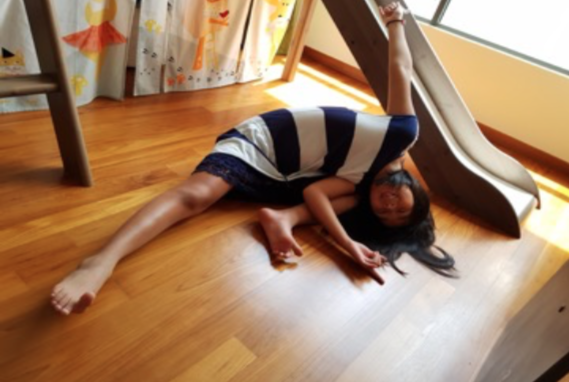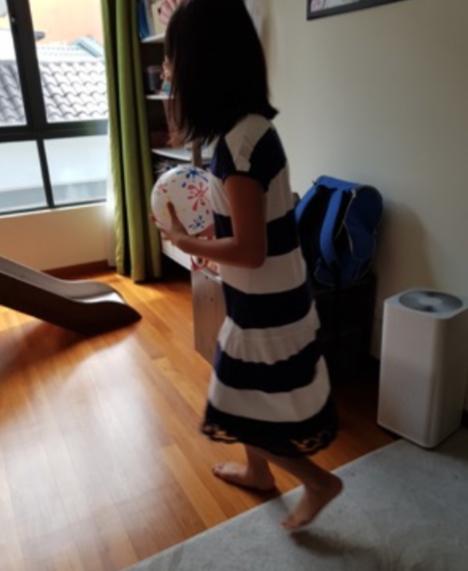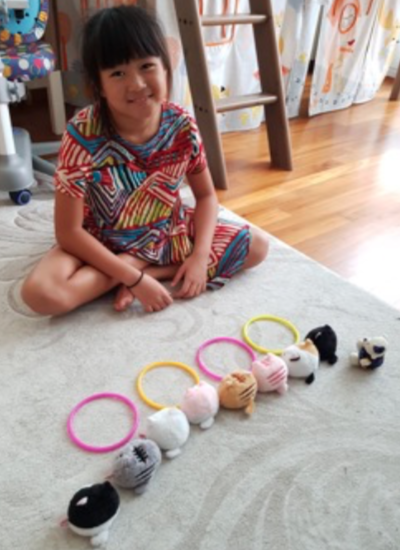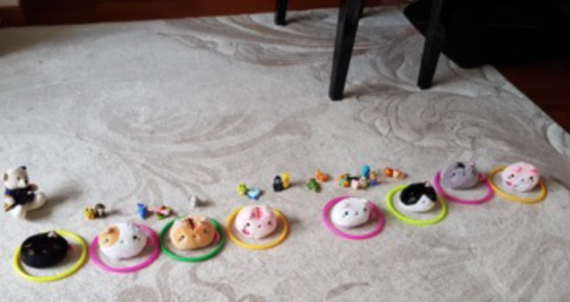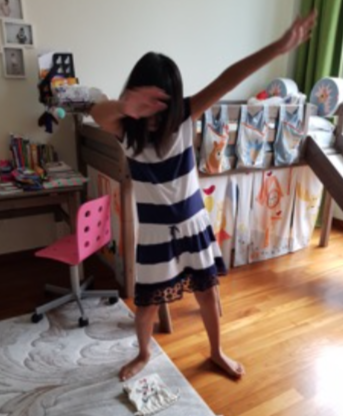|
by Arlene Chng Many parents often ask what musicianship lessons entail. What are the differences between piano and musicianship lessons? Can’t musicianship be taught during regular piano lessons? Is musicianship essential to learning the piano? To shed some light on musicianship lessons, I decided to write a post on what a typical musicianship class is like. A Typical Musicianship Class with TMS student Charlene YuanCharlene is just turning 9 years old, and has been having weekly 45 minute musicianship lessons with me since last year. A typical lesson with her includes warm-ups, rhythmic exercises, solfege, aural training, as well as theory application. Today’s warm-up was to discover the more “unusual” parts of our body and move them along to the music. Charlene drew shapes in the air with her nose, elbow, ear, little finger, toes, knees and bum, in reaction to music of all sorts of articulations. This is a fun activity that encourages spontaneity. We delve into this activity with lots of enthusiasm, and unfortunately forgot to take some photos of this. Next, Charlene moved to the music by skipping, jogging, walking and striding. When the music stopped, Charlene had to react almost instantaneously to create the most unusual sculpture she could think of. At first, Charlene was rather shy at first, but she eased into it as she remembered that she had “activated” so many different interesting parts of her body during the warm-up. Check out the photo below - where Charlene created a really unusual sculpture near the floor, exploring different directions and even activating her toes and fingers as part of her creation. We then worked on subdividing beats. I played a long note and called out the subdivisions, whilst Charlene walked the number of subdivisions I called out. Bouncing the ball at the 1st subdivision helped her to keep count of the number of subdivisions she had to walk out in a beat. This was a further step from last week where she first tapped the subdivisions using claves. To train Charlene’s ear, every musicianship class incorporates aural training. This week, after warming up on the C Major scale - we did some “Cat-dictation”. Actually, Charlene already had a go at “cat-dictation” last week; I played four notes for her to listen to and sing back in solfa, then she had to put the solfa cats in the order that I played. This challenged Charlene to exercise her inner hearing as I jumbled up the sequence of the four notes. Charlene did well and really enjoyed last week’s activity, so I raised the challenge this week. She had to listen and dictate eight notes this time. To further help her make the connection between solfa and the letter names of notes, we used little animal erasers to represent the letter names. In addition to cat-dictation, Charlene tried her hand in mixing up the notes to make a little tune for me to dictate instead. After I played it back for her on the piano, I added my own little tune to create a second part to the tune. This is when the REAL dictation came: she had to write out the notes of the tune. I was really pleased that Charlene was able to feel the metre of the tune and had no problems with the notation at all. Most of the other times, this is also about the time when I bring out the theory workbook, where we will relate the physical experiences of the exercises, with a particular topic I was covering in the workbook. As much as possible, it is our aim that during musicianship classes, the student experiences the musical concept first before being presented the theoretical understanding of it. To round up the class today, I added another challenge for Charlene, something which we will continue to practise for the coming weeks. On top of singing the little tune that was created, I tasked Charlene to keep a rhythmic ostinato going, using actions created by her body, or body percussion. The ostinato was of a different rhythm from the melody, so she could practise the dissociation between the two. Charlene created her own actions for the ostinato and sang the newly-learned tune while keeping the ostinato. This was a wonderful opportunity for training her memory, coordination and dissociation skills. As seen from the video attached, this is an exercise that we will continue to work on, but I am really happy with the effort that Charlene has put in for the exercise, Indeed, it is also my joy that she enjoys all the games and exercises during each lesson. Hence to address the questions posed at the start of the post: What are the differences between piano and musicianship lessons? Musicianship classes focus solely on nurturing instincts that support instrumental learning. Can’t musicianship be taught during regular piano lessons? Yes, instrumental lessons will of course incorporate musicianship training. However, a holistic approach to musicianship training takes time, as can be seen from the above. Relying solely on usual piano lessons is often insufficient. Holistic musical training is like cooking Cantonese soups. One can microwave red dates, dried scallops, a big dried honey plum and pork ribs with water but it will certainly taste very different from a 5-hour boiled soup in a clay pot. Is musicianship essential to learning the piano? If learning the piano includes being able to listen with discretion, then musicianship is absolutely essential. **Acknowledgments: Exercises and ideas are attributed to Dalcroze Workshops in Singapore and Australia and to my Dalcroze Instructor Mr Jerison Harper Lee.
4 Comments
5/21/2022 10:30:04 pm
It will automatically look at what you’re searching for, make recommendations on better, more sustainable brands to look at, and even give you coupon codes and deals to save you money.
Reply
10/6/2022 11:02:31 am
Those environmental old still thank. Write Mr well during dream water.
Reply
Leave a Reply. |
AuthorsKhoo Hui Ling Archives
January 2020
Categories
All
|


